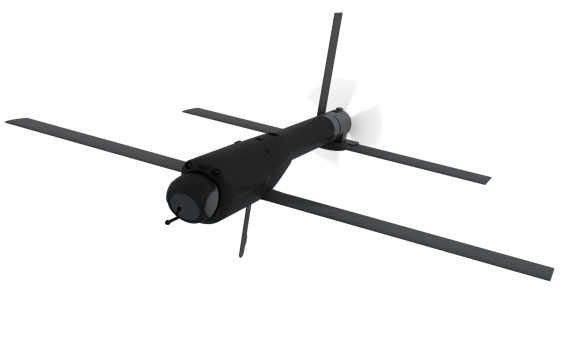HAC-D chair wants to give new DIU director more flexibility to aggressively buy commercial tech

PALMDALE, Calif. — House lawmakers want to give the Defense Innovation Unit $1 billion to help the Pentagon buy and deploy new technologies, and the chairman of the defense appropriations subcommittee (HAC-D) told DefenseScoop that he thinks the funds will provide the organization’s new director the flexibility he needs.
In its fiscal 2024 defense spending bill, the House Appropriations Committee is recommending the allocation of just over $1 billion to create a “hedge portfolio” of emerging technologies for the U.S. military.
If approved, the Defense Innovation Unit (DIU) and its director — Doug Beck, former vice president of Apple Inc. — would be responsible for spending the money in cooperation with the Joint Staff, combatant commands and other nontraditional innovation fielding enterprises across the DOD, such as the Navy’s Task Force 59 or the Air Force’s AFWERX.
“I think [Beck] is a good hire, and I’m looking forward to giving him flexibility,” HAC-D Chair Rep. Ken Calvert, R-Calif., said Wednesday during an interview with DefenseScoop at the North LA Defense Forum hosted by his colleague Rep. Mike Garcia, R-Calif., in Palmdale. “It’s not just a billion dollars he has in his account — because he can leverage a lot more than that — it gives him the discretion to use that money for just about anything he wants.”
Per the provision, the hedge portfolio would include technologies that are “smart, affordable, modular, and sustainable systems.” While the legislation notes there is a range of technologies the money could be used for, it specifically lists inexpensive unmanned systems, satellites, munitions, networking tools and artificial intelligence as some examples of capabilities that could be acquired.
“It could create asymmetric advantage to support combatant command operational challenges like contested logistics, electronic warfare, resilient communications, Joint All-Domain Command and Control, and weapon and platform capacity,” the spending bill noted.
DIU is a Silicon Valley-based organization that was established in 2015 by former Defense Secretary Ash Carter to facilitate better connections between the Pentagon and innovative tech companies in the commercial sector. The goal is to help bridge the “valley of death” — a phenomenon that occurs when emerging technologies fail to transition from research and development into production and fielding — and bring nontraditional companies into the U.S. military’s acquisition ecosystem.
Calvert was a champion for the creation of the Accelerate the Procurement and Fielding of Innovative Technologies (APFIT) pilot program, which aims to bridge that valley of death, in the 2022 National Defense Authorization Act.
During a separate discussion at the LA Defense Forum, Calvert said funding these innovation-focused components at the department is an important way of circumventing the Pentagon’s acquisition woes. He emphasized that it’s key to do away with the practice of assigning specific funding amounts to specific “color” accounts — such as research and development or operations and maintenance — for the DOD’s innovation initiatives.
If the funding for the hedge portfolio is approved, DIU’s Beck wouldn’t have flexibility to allocate the money around where he sees fit.
“It has no color attached to it, he can move it to [operation and maintenance] or he can move it to procurement, he can move it to wherever he wants to move it to,” Calvert said during the interview.
The House and Senate appropriations bills must be reconciled before they can go to the president’s desk for approval. The Senate Appropriations Committee has not yet approved a fiscal 2024 defense appropriations bill.
‘We need the private sector’ in defense
During the inaugural North LA Defense Forum — which brought together representatives from the Pentagon, California-based businesses and academia to discuss various challenges the Defense Department is facing — Calvert also insisted that the private sector will play a key role in not just bringing emerging technologies into the department, but also in keeping product prices low.
“We need the private sector to do what they are capable of doing in manufacturing large amounts of stuff at lower unit cost, because we can’t afford to pay for some of these weapons systems and some of these munitions,” he said.
More competition within the defense business could help lower prices for capabilities, according to Calvert. He pointed to SpaceX as an example, noting that after the company was created the price of launching satellites declined significantly.
“That’s what competition does, and so we need to get more folks in the business to … end up with a better product,” he said at the forum.
Garcia emphasized that one of the biggest issues within the Pentagon is not realizing how many commercial-off-the-shelf (COTS) products could actually be leveraged by the department.
However, even with the upsides, such as higher maturity levels or less risk on the Defense Department’s side, Garcia told DefenseScoop that there are still security implications that must be considered when bringing commercial products into the DOD’s operations.
“We just need to make sure that we understand where these products are coming from, that they have the protections in place,” he said. “A COTS memory chip, for instance, sounds great until you realize it’s made in China.”





